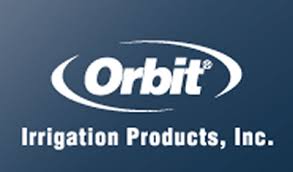Why should I have a home sprinkler system installed?
There are several great reasons to have a home sprinkler system installed.
- Convenience - once you have your home sprinkler system installed, and configured correctly, you don't need to think about it again until the seasons change.
- Water conservation - By programming your system to give the proper amounts of water at the optimal times of day your plants will require smaller amounts of water.
- Having a home sprinkler system installed will also help to increase the market value of your home. Curb appeal is very important in selling your home, and having a well maintained lawn is the key to great curb appeal.
- Regular watering has been shown to improve the health of your plants. By using a home sprinkler system, you don't have to plan this into your schedule.
Please explain the primary components in a home sprinkler system.
Timer/Controller
Often called either a timer, or a controller, this is the brain of your system. The timer turns your system on delivering exactly the right amount of water, at exactly the right time of day.
Lawn Sprinklers
Pop-up lawn sprinklers are the most commonly used for residential lawns. These sprinkler heads will be installed in a precise pattern in order to ensure your entire lawn receives the proper amount of water without overlap, or waste.
Drip Lines/Bubblers
Drip lines also known as bubblers are small heads that deliver very small streams, or drips to a particular plant. These are used for plants and trees that require only small concentrated amounts of water throughout the day.
Valves
Valves regulate the amount of water that flows to the sprinkler heads. Valves can be installed either above ground or below ground. In Arizona, it is typically a better decision to use below ground valves to avoid constant exposure to the sun.
Pressure Vacuum Breaker (PVB)
A Pressure Vacuum Breaker also called a PVB prevents water from being able to flow back into main water lines. This prevents any chemicals like fertilizer or other contaminants from re-entering the clean water supply. There are many different PVB devices, a technical expert from Callaway Irrigation Company can help you choose the correct PVB to meet local building code specifications.
How much water does a lawn in Arizona need?
You may be surprised to learn that even in Arizona many people over-water their lawns. You can achieve a thick healthy green lawn, without soaking your yard. Typically only 1 to 2 inches of water per week is enough water.
What are the most important ways to conserve water with my irrigation system?
Particularly in the state of Arizona, conserving water is very important, not only for your wallet, but also for the planet. Here are some simple steps you can take to ensure your watering your lawn in the most efficient way possible.
- Water in the early morning hours, this way less water evaporates and more is absorbed.
- Do NOT water in the middle of the day. Especially during the hottest days of an Arizona summer; the water will more likely evaporate than be absorbed by your lawn. This could also burn your lawn.
- When designing your sprinkler system, ensure the sprinkler heads are spaced properly, making sure there is no spray overlap - but also no space in the middle where there is no water coverage.
- Keep the soil moist. Be sure there is never enough time between watering that your soil is completely dry, but also be sure there is no run-off, this is wasted water.
- Take the time to create multiple programs for your timer/controller. Some examples of helpful programs, would be a regular schedule, which waters every other day for 5 minutes in each zone, and then a "Rainy Day" program which only waters in zones where the plants are not directly exposed to rain water.
- Installing a rain sensor, which automatically detects rainfall, and pauses your schedule, will save a lot of overwatering.
- Use drip irrigation instead of sprinkler heads wherever possible. These should always be used in flowerbeds, shrubs, and trees. Drip heads (bubblers) allow water to be directed to very specific locations.
- Make sure the amount of water is sensible in every zone - for example zones that are primarily shaded, do not need as much water as areas exposed to direct sunlight for long periods.
- Aerate your lawn – Aeration allows your lawn to absorb water more efficiently.
- Separate watering zones so that the plants that need similar amounts of water are on the same zone. For example, trees should not be in the same watering zone as grass, because they require much less water.
- Purchase irrigation products designed to conserve water. A smart controller - for example, will adjust the length of watering time based on the temperature.
Which backflow prevention device is right for my system.
In most homes the landscape irrigation water and the potable water are parts of the same system. This can be dangerous, sprinkler lines are placed in gardens and lawns where weed killer and or pesticides may be used. Sprinkler systems can sometimes draw water back in toward the potable water lines - this is known as backflow. Irrigation backflow can result in contaminated drinking water in your home. All states in the US have a building code which requires some type of backflow prevention device be installed on all residential and commercial sprinkler systems.
What time of day is best to water my lawn?
Setting your sprinkler timer to water before sunrise is best. This is when evaporation is least likely, and the lawn is most able to absorb water. Water pressure may also be at its best because there are less water resources being used through the home and neighborhood.




